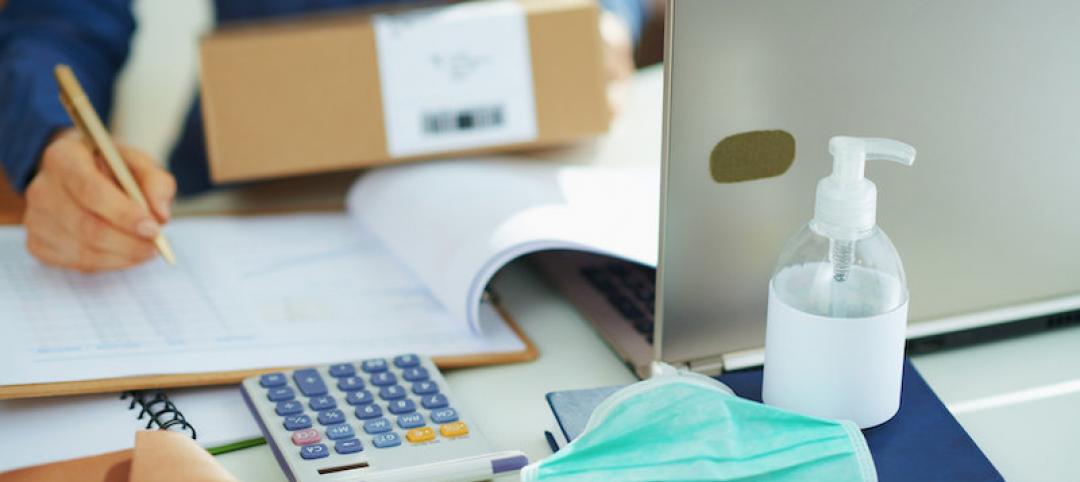Many contractors are asking themselves how social distancing can be executed practically on jobsites so their workers can operate safely. As expected, products are starting to emerge that address these concerns.
For example, SmartVid.io, according to industry news reports, has paired computer vision with its artificial intelligence interface, known as Vinnie, to identify workers who might be working too closely to each other or in packs larger than 10, which would violate OSHA’s social distancing guidelines.
Triax Technologies, which specializes in Internet of Things (IoT) worksite platforms, has launched Proximity TraceTM, an IoT system that provides social distancing alerts and contact tracing—identifying workers with whom confirmed COVID-19 cases came into contact over a period of time—through a wearable device.
The device, which can be attached to a hardhat or worn on the user’s body with a lanyard, offers added protection for essential workers during the pandemic, and can help contractors get their field employees back to work safety.
“Our solution is designed to ease the burden on workers to maintain appropriate distances as part of new safety practices that very well could become the next normal,” says Robert Costantini, Triax’s CEO.
Glibane Building Company, one of the industry’s leading GCs, is in the process of rolling out Proximity Trace devices to its active jobsites. “Worker safety is our top priority, so we were thrilled to hear that our technology partner Triax developed a solution to address the social distancing and contact tracing problems the industry is facing during COVID-19,” says Jason Pelkey, Gilbane’s senior vice president and Chief Information Officer.
The system’s details include:
•TraceTag, a real-time audible alert for close contact interactions, which the device records for contact tracing. The device’s rechargeable battery has weeks, even months, of battery life.
•Cellular gateways for logging headcount and attendance. These data are transmitted to the company’s cloud.
•A real-time audible alert and flashing red LED that activate when worker interaction is registered. This function can be turned off for contact tracing only. And an escalation alert beeps for timely distance correction.
•A data dashboard for worker profile management, device management and administration, and for producing contact tracing reports. The data include timestamps, the duration of interaction, and number of participants.
Proximity Trace does not rely on a client’s WiFi or internet service.
Triax states that its goals for Proximity Trace are to provide a proactive system to support and condition workers to comply with social distancing guidelines. The system can help companies passively collect worker interactions and duration to automate and digitize contact tracing. The system provides information needed to guide COVID-19 protocols at essential facilities. And it supports companies’ efforts to limit the spread of infection by identifying so-called “Subject 1” candidates who have been in contact with people whose COVID-19 exposure is confirmed.
Related Stories
Glass and Glazing | May 8, 2020
Vitro Architectural Glass releases guide on decontaminating glass surfaces
The five-page technical document offers methods for cleaning and sanitizing glass surfaces.
Coronavirus | May 7, 2020
White paper clarifies steps, roles for use of metal composite material
Responsibilities of manufacturers, distributors, and fabricators outlined.
Coronavirus | May 7, 2020
Architects release new resource for safer re-occupancy of buildings
The American Institute of Architects (AIA) is releasing a new Re-occupancy Assessment Tool today that provides strategies for limiting exposure to COVID-19 in buildings.
Coronavirus | May 6, 2020
Reopening Main Street post-COVID-19 quarantine
Cities and communities will need to adjust public space to allow customers back in with distancing in mind.
Coronavirus | May 6, 2020
Making jobsites safer in the COVID-19 world
A leading construction manager and installer certification alliance share their insights.
Coronavirus | May 6, 2020
National Construction Association and Procore to release new data showing the impacts of the coronavirus on the constructionindustry
Data will be released on Friday, may 8 at 12 pm EDT.
Healthcare Facilities | May 5, 2020
Holt Construction, U.S. Army Corps of Engineers complete temporary hospital in two weeks
The project is located in Paramus, N.J.
Coronavirus | May 5, 2020
How will COVID-19 change the procurement of professional design services?
We can use this moment as a test-case to build greater flexibility into how we pursue, win and deliver capital projects, better preparing the industry to meet the next disruption.
Coronavirus | May 4, 2020
Design steps for reopening embattled hotels
TPG Architecture recommends post-coronavirus changes in three stages.
Coronavirus | Apr 30, 2020
Gilbane shares supply-chain status of products affected by coronavirus
Imported products seem more susceptible to delays
















